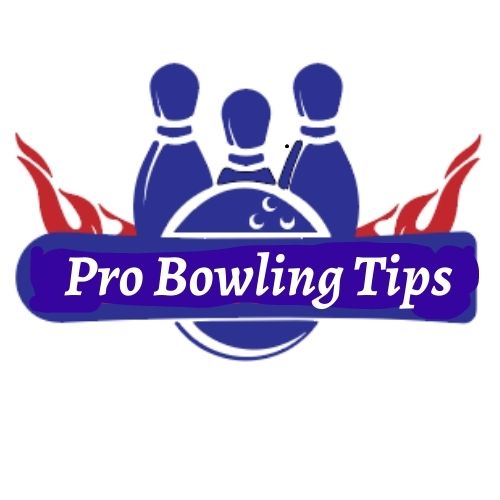
Bowling Boards Numbered! There are countless possible adjustments on the bowling lanes when a player bowls. Bowlers make these changes whenever the lane transitions. Doesn’t matter how long you have been bowling, or how perfect your bowling balls are, or how good you are at making necessary physical adjustments, you can never stop making target adjustments while bowling.
This is why it is essential to learn in-depth about bowling boards and how it is numbered. Understanding bowling boards numbered and how to deal with them while bowling is paramount and they will be helpful right up to the very end! So stay tuned to learn more about the bowling boards and their numbers.
What are boards in bowling?
Did you know bowling lanes are composed of 39 strips of wood even if it looks like one big textured lane? These wood strips run from the foul line and then all the way to the pins. These 39 strips are what we like to call boards. These boards are placed and numbered from one edge of the gutter to another. So, yeah, this is what is defined as boards in the bowling dictionary.
How many boards are on a bowling lane?
In every bowling lane, there are exactly 39 boards that bowlers use as guidelines to adjust and target while bowling. These boards are 1 inch in width on average and are placed next to one another to make it look like one big board. With these 39 boards, the bowling lanes are 42 inches wide (approximately). The width of the lane may make you think that there isn’t a lot of room to play with, compared to the length of the bowling lane, but that’s not a problem. Bowlers make the best out of these lanes with the right equipment and make moves using these 39 boards on the bowling lane.
Bowling Board Breakdown
Not all boards on the bowling lane are used for the same purposes. Some are used for bowling outside, while others are used for bowling inside. Right-handed bowlers count the boards and arrows from the right side to the left, and left-handed bowlers count them from the left side to the right side. The dots you see on the approach area and the arrows you see on the bowling lanes are placed on every 5th board. Let me break down bowling lane boards according to their numbers for better understanding.
1-5 Boards
Do you know what it means to bowl from the outside? Well, when a bowler from the outside, what they mean is using the 1-5 boards. That is the most outside a bowler can possibly play. Using these boards for bowling is pretty risky as amateurs often get their bowling balls in the gutter. However, bowling from 1-5 boards is often essential when the oil pattern is really short because bowlers create some lengths by rolling the ball over these boards. On the 5th board, bowlers can see the first arrow which helps as an indicator.
6-10 Boards
Right after the first arrow, you can see a second arrow. And, between these two arrows, the boards you will see are 6-10 boards. These boards are most commonly used for rolling the ball to the pins. When you hear a bowler saying “playing a little from the outside”, what they mean is using 6,7, or 8 boards. And then, when they say “playing a little from the inside”, the 9 and 10 boards also come into consideration.
11-15 Boards
The area between the 2nd and 3rd arrow has 11-15 boards. This area is most commonly used by bowlers when they face a longer oil pattern. This is when straighter is greater works for them. Bowlers who bowl from inside, use any of these 11-15 boards.
16-20 Boards
Did this ever happen to you that you have failed to knock down the headpin, but could get the rest of them? It’s very rare but not out of question. If you need to pick up the frontal pins, then you might need to use a board from 16-20 boards to roll down the ball. Some beginners love to bowl using the 20 board to hit the headpin on the face. The 20th board is where the middle arrow is placed.
21-25 Boards
The 21-25 boards are like 16-20 boards. The difference is that left-handed bowlers treat it like 16-20 boards, and right-handed bowlers hardly ever need to roll their balls on these boards.
26-30 Boards
The 26-30 boards are like 11-15 boards. Left-handers treat it like 11-15 boards and right-handers don’t need to roll their balls over these boards.
31-35 Boards
The 31-35 boards are like 6-10 boards. Left-handers bowl on these boards like a right-hander bowl on 6-10 boards.
36-39 Boards
The 36-39 boards are the most outside area a left-handed bowler rolls their ball. So these are is almost like 1-5 boards.
Conclusion
Boards are not just important for rolling your ball in the right spot. They are also essential to calculate your bowling ball’s angle and entry point. When you know how bowling boards are numbered, you can surely bowl better. So I hope, this article will be helpful to those who didn’t have any idea about how the numbering of boards works. Now, put this knowledge to work, and I’m sure you will be able to bowl so much better. As always, good luck and never stop having fun while bowling!

Passionate Bowler and Bowling Enthusiast
Jess Pinelli is a dedicated bowling enthusiast with a deep love for the sport that spans over 6 years. With numerous strikes, spares, and a few gutter balls under hes belt, he has honed his skills on lanes across the country. Pinelli’s journey in the world of bowling has been a remarkable one, from casual weekend games with friends to competitive league play and even a few local tournaments.
Driven by her passion for the game, Pinelli decided to channel her expertise and knowledge into the digital realm, becoming a prolific author on this bowling website. She’s your go-to source for everything bowling-related, from mastering the perfect hook to choosing the right bowling ball and even navigating the world of bowling etiquette.
When she’s not busy writing informative articles or reviewing the latest bowling gear, you’ll likely find Pinellis at her favorite local bowling alley, helping newcomers improve their game or enjoying some friendly competition with fellow bowlers. She firmly believes that bowling is not just a game but a community, and she’s committed to fostering that sense of camaraderie both online and offline.



